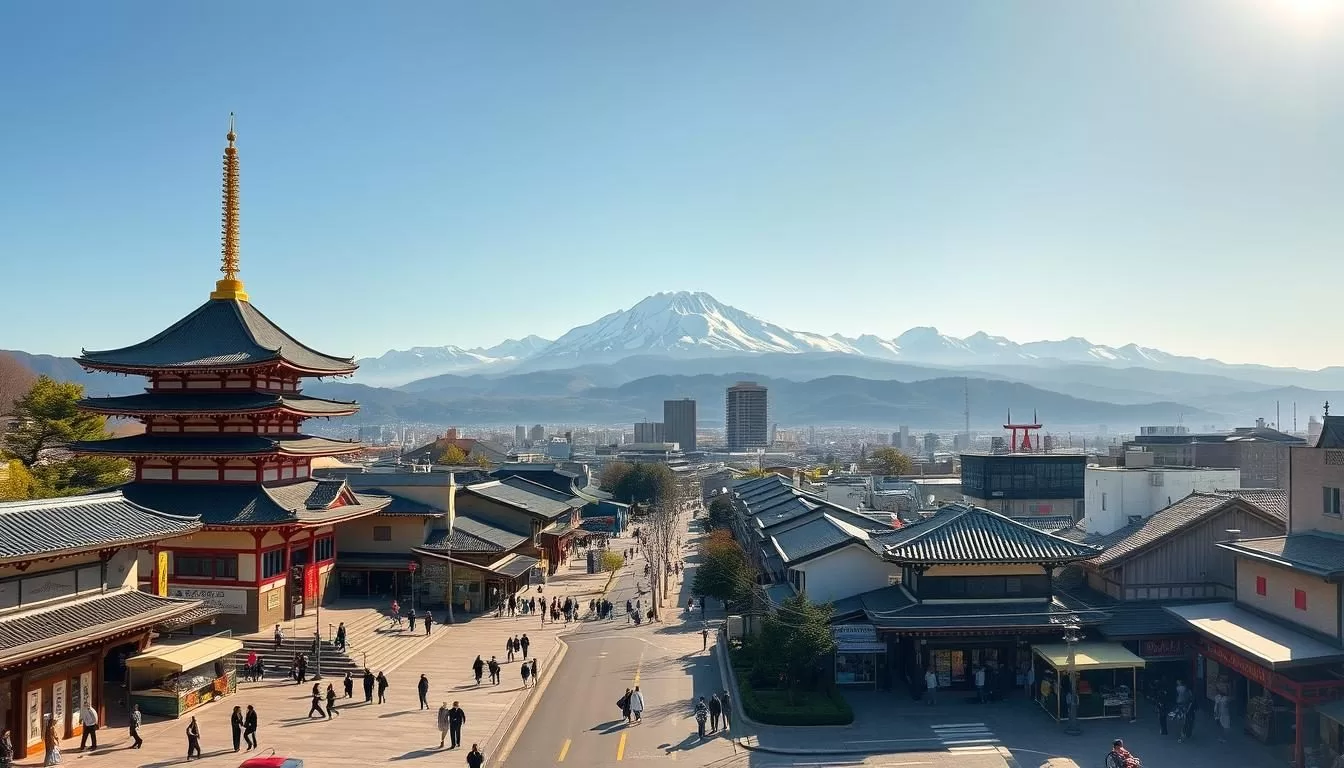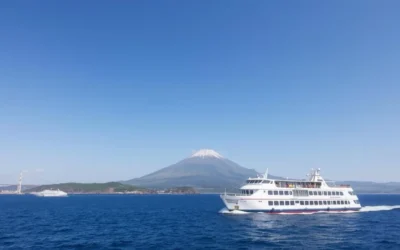✓ Accommodations✓ Flights✓ Rental Cars✓ Tours & Activities
Welcome to Nagano City, a hidden gem in central Japan that offers incredible experiences throughout the year for all types of travelers. As the proud host of the 1998 Winter Olympics and home to the world-famous Jigokudani Monkey Park, this city has established itself as a premier destination for both domestic and international visitors.
In this comprehensive guide, we’ll explore the top attractions and activities in this beautiful place, from ancient temples and historic sites to natural wonders and culinary delights. Whether you’re planning a winter ski adventure, a spring cherry blossom tour, a summer hiking trip, or an autumn foliage excursion, Nagano City is the ideal place to begin your journey through one of Japan’s most beautiful prefectures.
Discovering Nagano City: Japan’s Alpine Gem
Nestled in the heart of Japan’s mountains, Nagano City is a hidden gem waiting to be explored. As you plan your trip to Japan, consider visiting this city that offers a unique blend of traditional culture and modern convenience.
Where is Nagano City Located?
Nagano City is situated approximately 245 kilometers northwest of Tokyo, making it easily accessible by train via the Hokuriku Shinkansen line. The travel time from Tokyo is about 80 to 110 minutes, depending on the service you choose. Located in the mountains, Nagano City is the largest city in Nagano Prefecture and serves as a primary transport hub for exploring the surrounding area and its many attractions.
The location of Nagano City provides a refreshing escape from the hustle and bustle of Japan’s larger cities, offering clean air, stunning alpine views, and a more relaxed pace of life.
| Location | Distance from Tokyo | Travel Time by Train |
|---|---|---|
| Nagano City | 245 km northwest | 80-110 minutes |
Why Visit Nagano City?
Visiting Nagano City is a great way to experience the best of Japan’s travel offerings. The city combines urban conveniences with easy access to nature, creating the perfect base for travelers who want to experience both traditional Japanese culture and outdoor adventures. The surrounding area features dramatic mountain landscapes, pristine forests, and picturesque rural villages that showcase a different side of Japan.
With its rich history, natural beauty, and distinctive local culture, Nagano City offers visitors an authentic Japanese experience away from the typical tourist trail. You can enjoy various activities, from exploring historical sites to participating in outdoor adventures, making Nagano City an ideal destination for a wide range of interests.
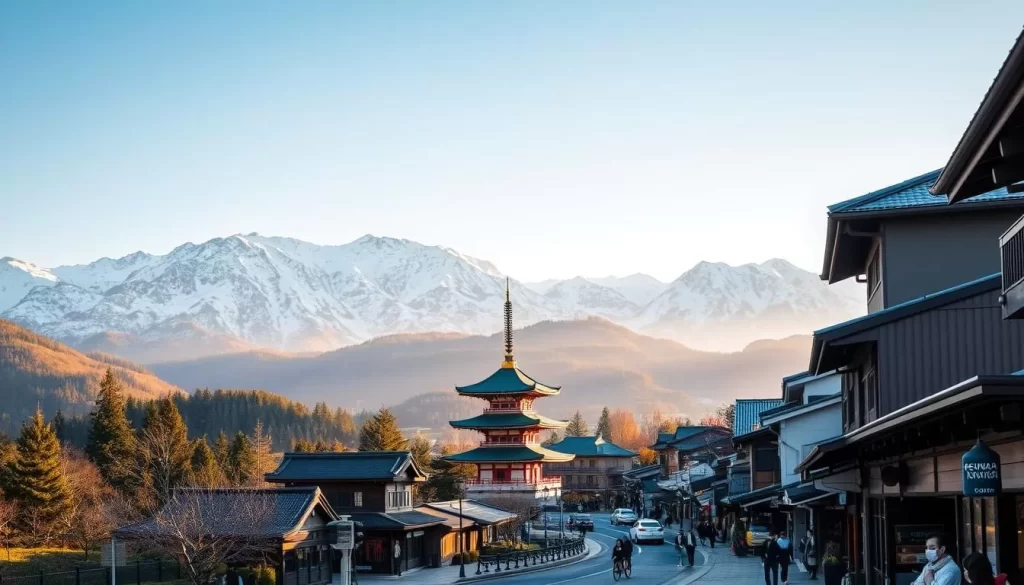
Zenko-ji Temple: Nagano’s Spiritual Heart
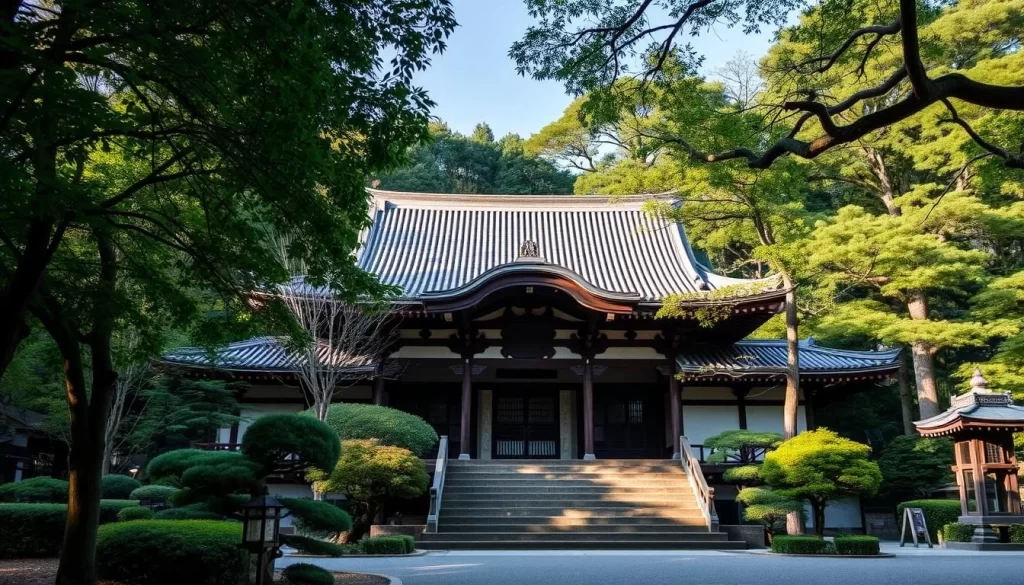
Nestled in the heart of Nagano City, Zenko-ji Temple is a spiritual haven that has been a cornerstone of Japanese Buddhism for centuries. Located within walking distance of Nagano Station, it’s easily accessible and promises an enriching experience for all who visit.
The History and Significance
Founded in 642, Zenko-ji Temple stands as one of Japan’s oldest and most significant Buddhist temples. With a history spanning over 1,300 years, it has become a revered place of worship and pilgrimage. The temple houses Japan’s oldest known Buddhist statue, a National Treasure that attracts visitors from across the globe.
The temple’s significance extends beyond its historical importance, as it is also a vibrant center of Buddhist culture and spirituality. Every day of the year, a morning ceremony takes place, welcoming people of all faiths and backgrounds to participate.
What to See at Zenko-ji Temple
Upon arriving at Zenko-ji Temple, you’ll discover a complex that is as welcoming as it is historically significant. The main temple, with its impressive architecture, is a must-see. Visitors can explore the various halls and grounds, taking in the serene atmosphere that pervades this sacred place.
For a deeper understanding of the temple’s rich history and cultural significance, consider joining a guided tour. These tours provide insight into the hidden symbolism and fascinating stories behind Zenko-ji, enhancing your overall experience.
Buddhist Experiences and Ceremonies
Zenko-ji Temple offers a range of Buddhist experiences, allowing visitors to engage with the temple’s spiritual practices. Participate in “goma” fire ceremonies, “shakyo” calligraphy, or “zazen” meditation sessions led by resident monks. These experiences provide a unique opportunity to connect with the temple’s spiritual essence at any time of day.
Whether you’re looking to deepen your understanding of Buddhism or simply seeking a moment of peace, Zenko-ji Temple is a destination that promises a meaningful and enriching experience.
Jigokudani Monkey Park: Meet the Famous Snow Monkeys
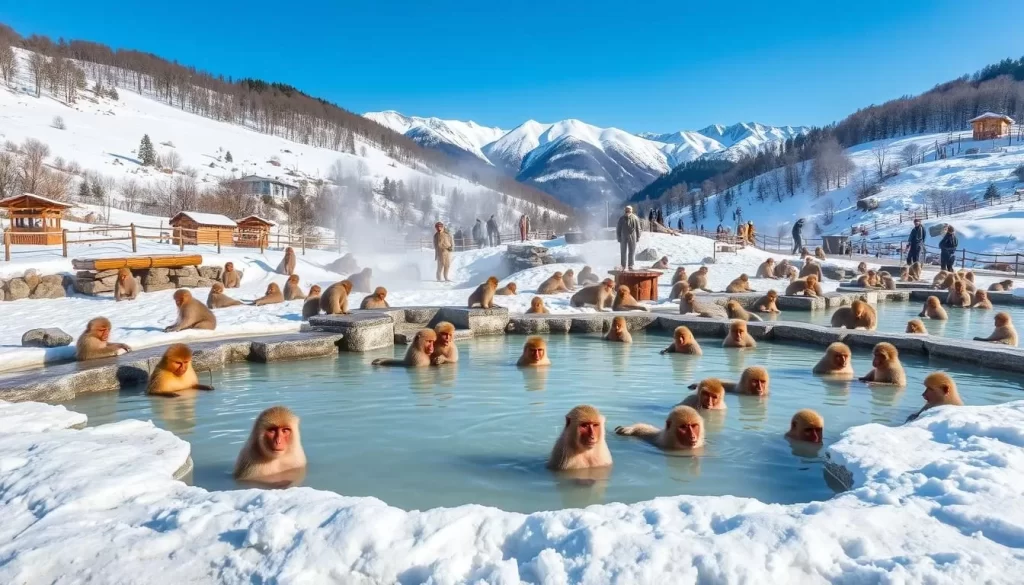
For a unique wildlife experience, head to the Jigokudani Monkey Park in Yamanouchi, Nagano, where you can see the famous snow monkeys up close. The park is one of Nagano’s most iconic attractions, drawing visitors from around the world who come to witness the Japanese macaques bathing in natural hot springs.
The Jigokudani Monkey Park is a year-round destination, with each season offering a distinct experience. While it’s most famous for the snow monkeys in winter, the park is also a great place to visit during spring, summer, and autumn.
Best Time to Visit the Snow Monkeys
The best time to see the snow monkeys in the hot springs is during the colder months, from December to March. During this period, the contrast between the steaming hot springs and the snowy landscape makes for a breathtaking sight. However, each season has its unique charm: in spring, you can see baby monkeys playing among cherry blossoms; summer brings lush greenery; and autumn is marked by beautiful fall foliage.
Visiting during the shoulder season can also be beneficial, as the crowds are smaller, and the experience feels more intimate.
Tips for Visiting the Monkey Park
When visiting the Jigokudani Monkey Park, it’s essential to be mindful of the monkeys’ well-being. Keep a respectful distance, avoid direct eye contact, and never attempt to feed them. The park is home to wild animals, and maintaining a safe distance ensures both your safety and the monkeys’.
Additionally, be prepared for the weather, especially during winter, as the park can be quite cold and snowy. Dress warmly, and consider bringing waterproof gear to protect yourself from the elements.
Guided Tours to the Monkey Park
For a more informative and engaging experience, consider joining a guided tour to the Jigokudani Monkey Park. Knowledgeable guides can provide insights into the behavior and social structure of the Japanese macaques, enhancing your understanding and appreciation of these fascinating creatures.
Guided tours can also help you make the most of your visit, ensuring you don’t miss out on the best viewing opportunities.
Togakushi: Sacred Shrines and Ninja History
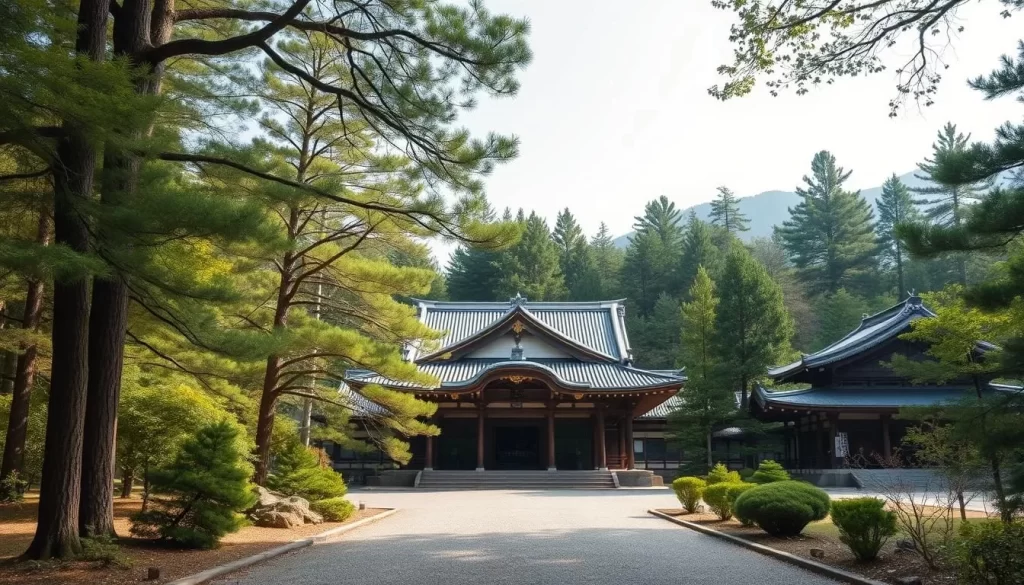
The Togakushi shrine complex, situated in the heart of the Myoko-Togakushi Renzan National Park, is a must-visit for those interested in Japan’s spiritual and martial history. Located around 1,200 meters above sea level, Togakushi offers a unique blend of Shinto heritage and ninja traditions, making it an ideal day trip from Nagano City.
The Five Shrines of Togakushi
Togakushi is home to five Shinto shrines spread throughout a forested mountain area, connected by scenic walking trails. These shrines allow visitors to experience the spiritual connection between nature and Japanese religious traditions. The trails offer a serene walk through the mountains, providing an opportunity to connect with nature.
The shrines are a significant place for Shinto worship, embodying the belief that notable natural features are imbued with divinity. As you walk through the trails, you can appreciate the tranquility of the forest and the historical significance of the shrines.
The Avenue of Giant Cedars
The most famous feature of Togakushi is the avenue of giant cedars leading to the Okusha (Upper Shrine). Many of these huge trees are between 400 to 800 years old and are considered inhabited by ‘kami’ or ‘the divine’, making them as significant as the shrine itself. This natural corridor is particularly beautiful during spring and autumn, offering breathtaking views.
Visiting this area is a memorable experience, especially if you visit during the day when the sunlight filters through the trees, creating a serene ambiance.
Togakure Ninpo Museum and Ninja Experiences
For over 800 years, Togakushi has been associated with ninja traditions. Today, you can visit the Togakure Ninpo Museum to learn about the local Togakure school of ninja and even try your hand at ninja skills like throwing shuriken (ninja stars). This experience provides a unique insight into Japan’s martial history.
Having a car makes exploration easier, but there are also bus services from Nagano City for those without their own transportation. It’s advisable to plan your visit to spend at least half a day here to properly explore both the shrines and ninja attractions.
In conclusion, Togakushi is a fascinating destination that combines spiritual significance with ninja history, nestled within the beautiful Myoko-Togakushi Renzan National Park. Whether you’re interested in history, nature, or martial arts, Togakushi has something to offer, making it a great place to visit at any time of the year.
Matsushiro: Explore Nagano’s Samurai Town

Step into the past in Matsushiro, a well-preserved samurai town near Nagano City. Located 12km to the south, Matsushiro served as the stronghold of the powerful Sanada clan for over 250 years after they relocated there in the 17th century.
The town’s samurai heritage is still visible in its many Edo Period attractions, including Matsushiro Castle Park and the Sanada Residence. Visitors can explore these historical sites to gain insight into the lives of high-ranking samurai families during that era.
Matsushiro Castle Park and Sanada Residence
Matsushiro Castle Park features the foundations of the original castle, along with beautiful gardens that change with each season of the year. The nearby Sanada Residence offers a glimpse into the lifestyle of the Sanada clan, showcasing how they lived during the Edo period.
These attractions are a testament to Matsushiro’s rich history and its significance as a samurai town. You can easily visit these places by car from Nagano City, with free parking available at most attractions.
Zozan Underground Imperial Headquarters
Beneath Matsushiro lies an unexpected historical secret: the Zozan Underground Imperial Headquarters. Excavated during the final months of WWII, this network of tunnels was intended to serve as the headquarters of the Japanese military and government during the anticipated Allied invasion.
The tunnels, approximately 75% complete when the war ended, provide a sobering look at Japan’s wartime preparations. Visitors can explore these tunnels throughout the year, gaining a unique perspective on the town’s role in Japan’s history.
Matsushiro is easily accessible by car or by taking the #30 Alpico bus from Nagano Station, making it a convenient day trip from the city.
Soak in Nagano’s Rejuvenating Hot Springs
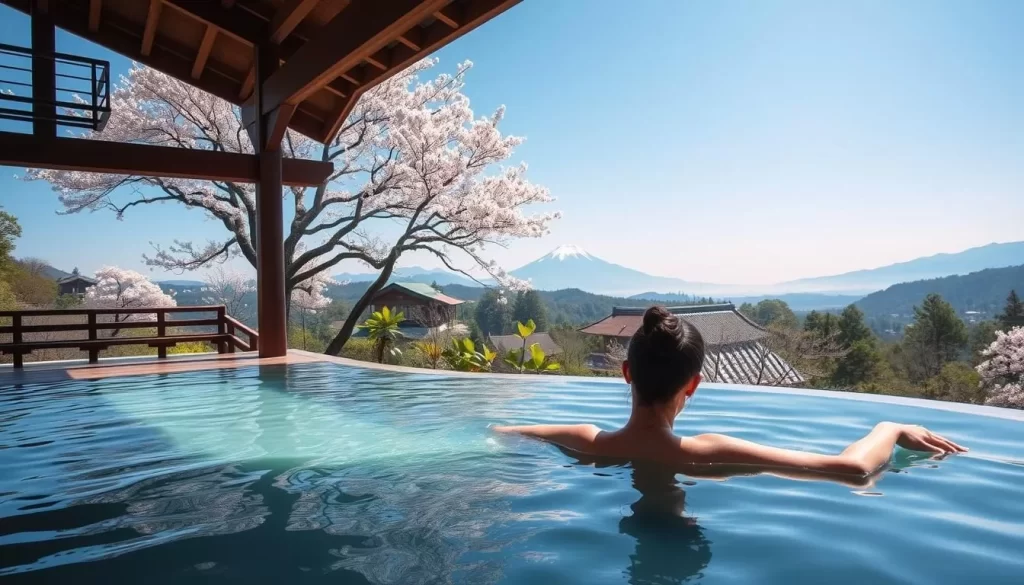
Experience the bliss of Nagano’s natural hot springs, a haven for relaxation and wellness. Nagano Prefecture is blessed with numerous natural hot springs (onsen), making a soothing soak in mineral-rich waters an essential experience for visitors throughout the year. The therapeutic benefits of these hot springs vary by location, with each onsen town offering waters with different mineral compositions said to help with various health conditions.
Popular Onsen Areas Near Nagano City
Several popular onsen areas are located near Nagano City, making them ideal day-trip destinations or places to stay for a relaxing soak. Yudanaka Onsen and Shibu Onsen, close to the famous Jigokudani Monkey Park, are must-visit hot spring destinations. Nozawa Onsen, renowned for its skiing in winter, also offers a tranquil onsen experience. These historic onsen towns have numerous ‘ryokan’ (traditional guesthouses) with their own in-house onsen, providing visitors with a range of options to unwind.
Onsen Etiquette for First-Time Visitors
For visitors new to onsen, understanding the etiquette is crucial. Always wash your body thoroughly before entering the bath, and never wear swimwear in traditional baths. It’s also important to keep your small towel out of the water. Many onsen offer different bathing options, including indoor baths, outdoor baths (rotenburo) with breathtaking mountain views, and private baths for those seeking more privacy. By following these simple rules, you can fully enjoy the onsen experience in Nagano’s historic towns and city.
Nagano’s hot springs are not just a place to relax; they are an integral part of the region’s culture and history. Visiting an onsen town gives you the opportunity to experience the unique atmosphere of these historic places where Japanese people have been coming for relaxation and healing for centuries. Whether you’re looking to rejuvenate your body or simply unwind, Nagano’s onsen is an experience not to be missed.
Traditional Japanese Accommodations in Nagano
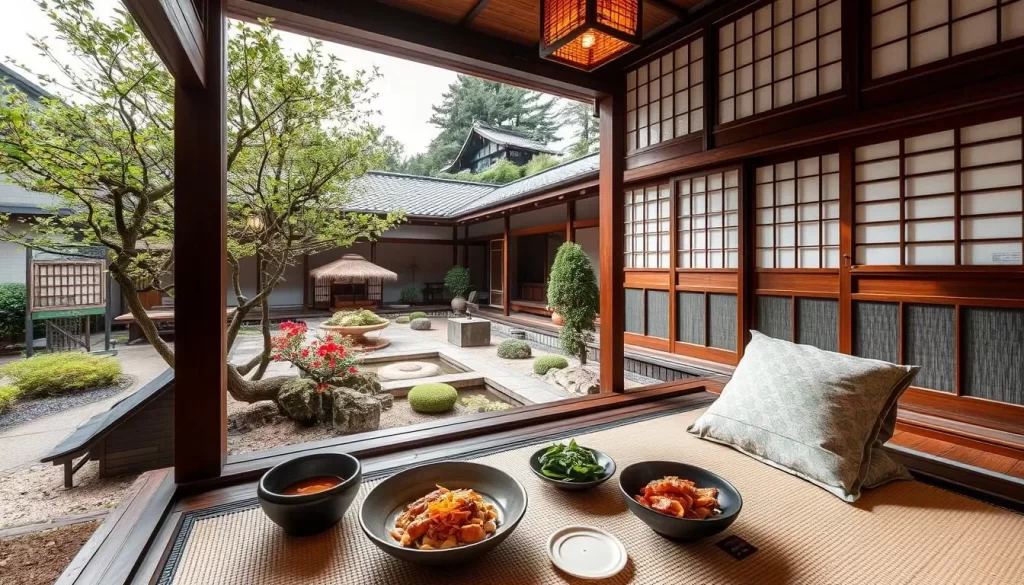
When visiting Nagano, you can immerse yourself in traditional Japanese culture by staying at a ryokan. Ryokans offer a unique experience that combines comfort, hot springs, and seasonal kaiseki meal service, allowing you to escape the troubles of daily life and indulge in the refinement of traditional Japanese service.
Staying at a Ryokan: What to Expect
A stay at a ryokan is characterized by its traditional Japanese atmosphere, with tatami-matted rooms, futon bedding, and Japanese-style baths. You can expect to be served kaiseki cuisine, an elaborate multi-course dinner featuring seasonal local ingredients prepared with meticulous attention to detail and artistic presentation. Many ryokans in Nagano also feature their own private hot spring baths, allowing you to enjoy the therapeutic waters without leaving the comfort of your accommodation.
Best Ryokans in and Around Nagano City
Nagano City and its surrounding areas are home to numerous excellent ryokans. For instance, Jizokan Matsuya Ryokan is within walking distance to Zenko-ji Temple, offering a convenient and culturally rich experience. In the hot spring town of Yamanouchi, Yudanaka Yasuragi provides a relaxing getaway. Additionally, Shibu Onsen, with its historic atmosphere and 13 public baths, offers several ryokan options. While the price of staying at a ryokan can be higher than a standard hotel, the comprehensive cultural experience, including meals, baths, and attentive service, makes it well worth the cost for most visitors.
When choosing a ryokan, consider the location, amenities, and the type of experience you’re looking for. Whether you’re in the heart of Nagano city or in a nearby town, there’s a ryokan that can meet your needs and provide a memorable stay.
Nagano City, Japan: Best Things to Do in Winter
With its rich legacy from the 1998 Winter Olympics, Nagano City is a top destination for winter activities. The city and its surroundings transform into a snow sports paradise, offering world-class facilities and a variety of fun things to do in the snow.
Skiing and Snowboarding at Nearby Resorts
Nagano Prefecture boasts the highest concentration of ski resorts in Japan, making it an ideal location for skiing and snowboarding enthusiasts. Popular resort areas include Hakuba Valley, known for its multiple interconnected ski areas, Shiga Kogen, Japan’s largest ski resort, and Nozawa Onsen, which combines great skiing with traditional hot spring culture. All these resorts are accessible within 30-90 minutes from Nagano City.
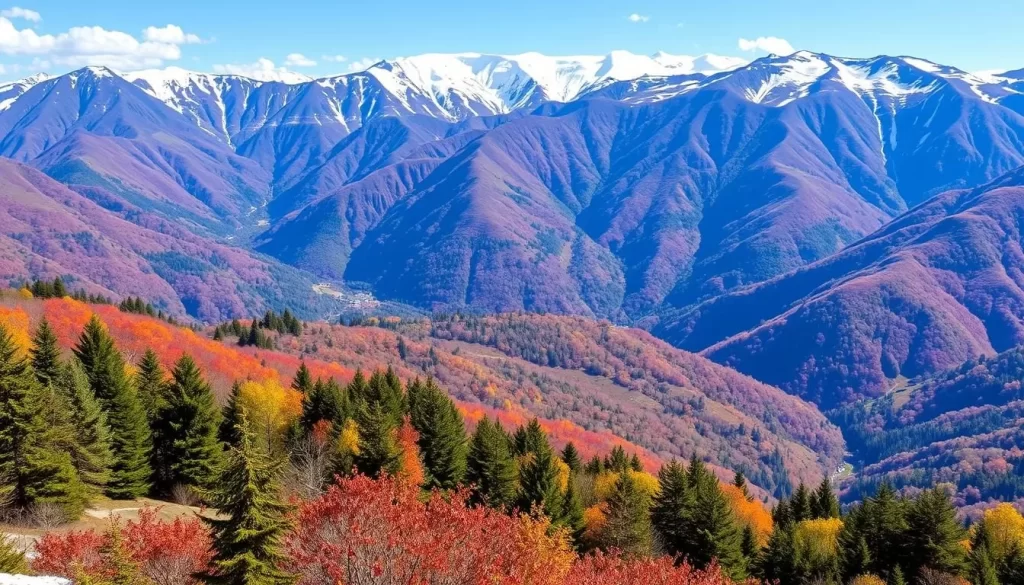
Winter Festivals and Events
Beyond skiing and snowboarding, Nagano City offers many other exciting things to do in winter, including snow festivals and illumination events. These events showcase the region’s rich cultural heritage and provide a unique winter experience. Visitors can enjoy the beauty of snow-covered landscapes, participate in local traditions, and savor special seasonal foods.
Family-Friendly Snow Activities
For families or those looking for a more relaxed winter experience, Nagano offers plenty of family-friendly snow activities. Maruike Snow Activity Park is a great option, providing a safe and dedicated area for sledding, snow tubing, and snowman building. The park is equipped with various gear, including sledges, snow-tubes, and snowscoots, ensuring a fun day out for all ages.
Winter is also the perfect time to visit Jigokudani Monkey Park, famous for its snow monkeys bathing in hot springs. This iconic winter scene attracts photographers from around the world, making it a must-visit destination during your winter trip to Nagano.
Spring Activities in Nagano
Spring in Nagano is a time of renewal, with the melting snow revealing new landscapes and opportunities for adventure. As the season progresses, the city comes alive with various activities and breathtaking scenery.
Cherry Blossom Viewing Spots
Nagano City’s cherry blossom season typically begins in mid-April, about two weeks later than Tokyo. You can enjoy hanami (flower viewing) picnics on sunny spring days at popular spots like Joyama Park, the grounds around Zenko-ji Temple, and along the Chikuma River.
Tateyama-Kurobe Alpine Route and Snow Walls
The Tateyama-Kurobe Alpine Route is a must-visit during spring, offering a unique experience with its towering snow walls that reach up to 20 meters high. This route is only accessible between mid-April and mid-June, making it a seasonal highlight. You can take a guided tour to explore this remarkable mountain passage.
The alpine route is a stunning example of nature’s beauty, with the snow walls creating a dramatic corridor known as the “Snow Wall Walk.” As you walk through this passage, you’ll be surrounded by the majestic mountains and the serene atmosphere of the alpine landscape.
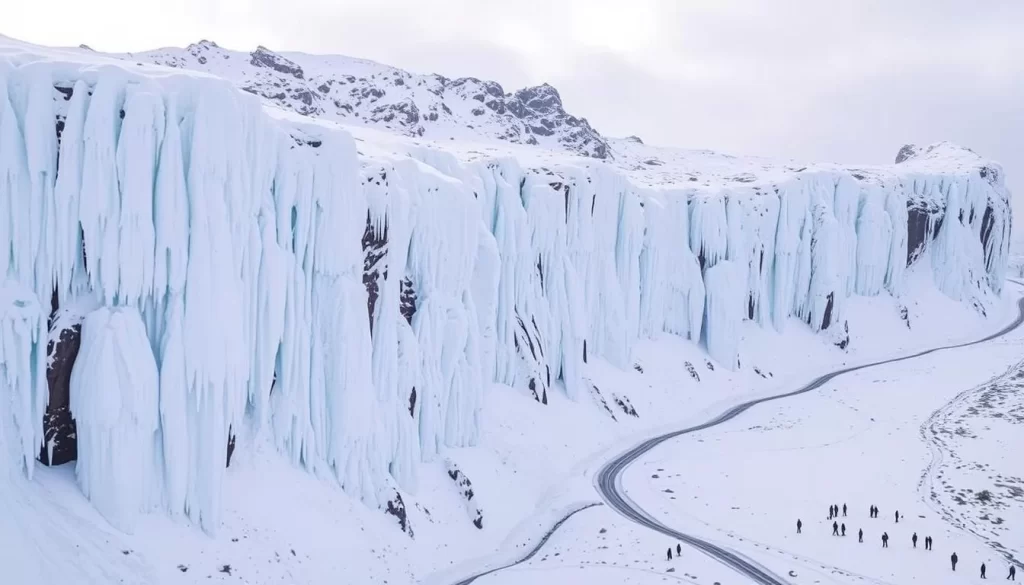
In addition to the Tateyama-Kurobe Alpine Route, spring is an excellent time to explore Nagano’s parks and enjoy the mild weather. You can take a leisurely day trip to the nearby mountains, where hiking trails begin to open up, and wildflowers start to bloom.
For wildlife enthusiasts, spring brings the opportunity to see baby snow monkeys at Jigokudani Monkey Park, offering a different but equally charming experience compared to the winter months. This is a great way to spend a day in Nagano, enjoying the natural beauty and unique attractions.
Summer Adventures in Nagano
Summer in Nagano is a time of adventure and relaxation, with the mountains providing a stunning backdrop for a wide range of activities. The region’s natural beauty is on full display during this season, making it an ideal time to explore the great outdoors.
Hiking and Outdoor Activities
Nagano’s mountainous terrain offers numerous opportunities for hiking and outdoor adventures. Kamikochi, a picturesque valley surrounded by rugged peaks, is a must-visit destination for nature lovers and hikers. The area boasts well-maintained trails that cater to all fitness levels, from leisurely strolls along the Azusa River to more challenging multi-day treks.
The Japanese Alps surrounding Nagano provide excellent hiking opportunities, with comfortable temperatures even on hot summer days due to the area’s higher elevation. You can enjoy a day of hiking in the mountains, taking in the breathtaking scenery and marveling at the crystal-clear rivers and tranquil ponds.
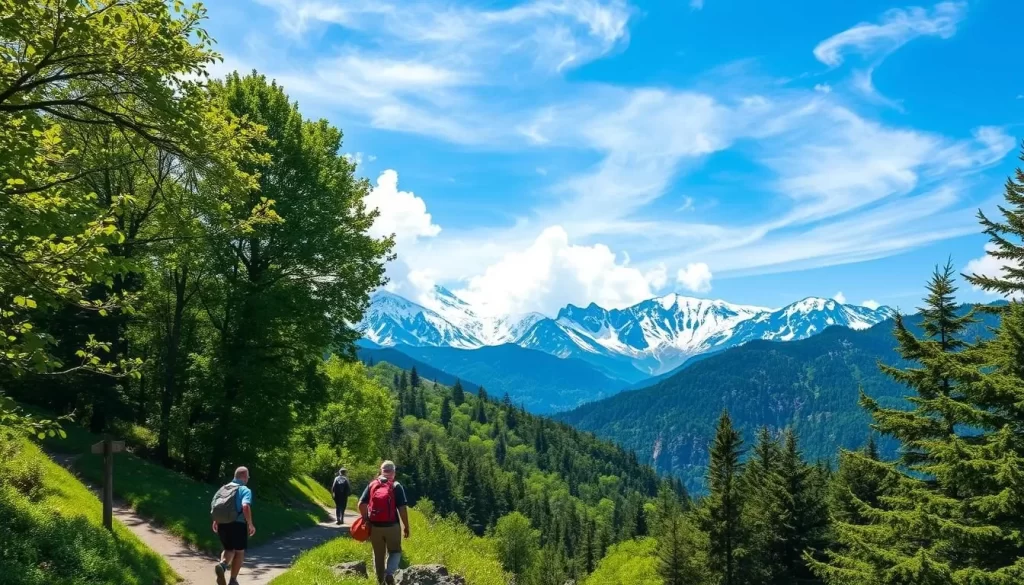
For families, summer activities in Nagano include river rafting, canyoning, and mountain biking, making the most of the region’s natural beauty. You can also visit outdoor adventure parks that offer a range of exciting activities for all ages.
Summer Festivals in Nagano
Summer in Nagano is not just about outdoor adventures; it’s also a time for vibrant festivals and cultural events. The Binzuru Festival at Zenko-ji Temple, the Matsumoto Bon Bon Dance, and numerous local matsuri (festivals) bring communities together with traditional music, dance, and food, often lasting for several hours.
These festivals offer a unique glimpse into Nagano’s rich cultural heritage and are a great way to experience the local culture. You can enjoy the festivities, savoring local delicacies and participating in the celebrations that take place throughout the town.
Autumn Colors and Activities in Nagano
Autumn in Nagano is a season of breathtaking beauty, with the mountains ablaze in color. As the seasons change, visitors flock to this picturesque region to witness the spectacular display of autumn foliage. The mountains surrounding Nagano transform into a kaleidoscope of red, orange, and gold, creating a breathtaking landscape.
Best Spots for Fall Foliage
Nagano offers numerous spots to enjoy the fall colors, with some locations being more popular than others. Kamikochi, particularly around Taisho Pond, is a must-visit destination, although be prepared for crowds. Other notable spots include the forest shrines of Togakushi, Joyama Park in Nagano City, and the slopes around Hakuba. These locations are easily accessible by car or public transportation, making it convenient for visitors to explore the area.
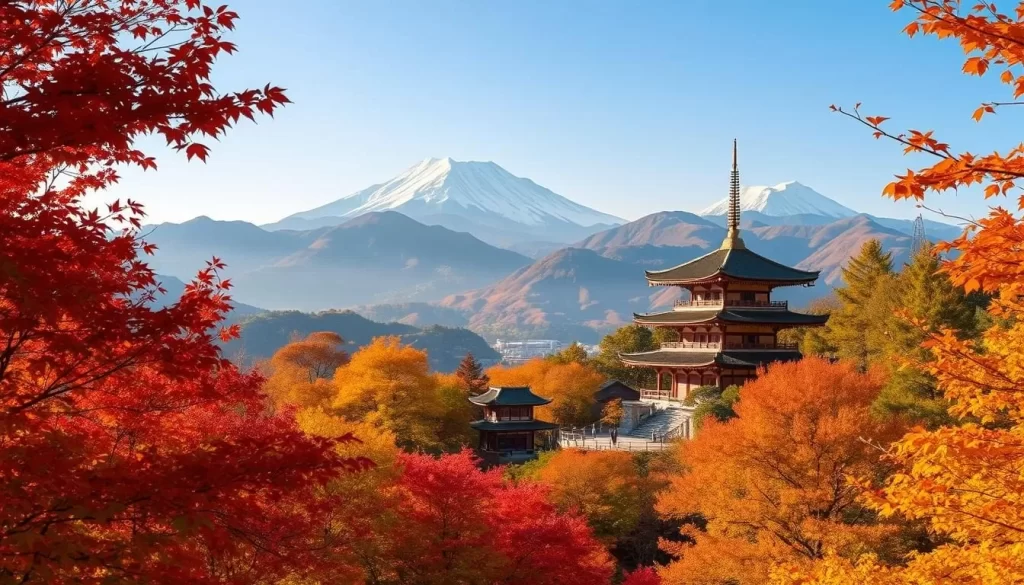
The fall colors in Nagano typically begin at higher elevations in late September and gradually work their way down to the cities and town in the valleys by early November, creating a longer viewing season than in many other parts of Japan.
Harvest Season and Food Festivals
Autumn is not just about the fall foliage; it’s also a time of harvest in Nagano. The region is renowned for its diverse ingredients and cuisine, with the area offering an abundance of fresh produce including apples, grapes, mushrooms, and chestnuts. These ingredients feature prominently in seasonal menus and food festivals throughout the town, showcasing the best of Nagano’s culinary delights.
Culinary highlights of autumn include matsutake mushroom dishes, chestnut-based sweets from Obuse town, and the famous soba noodles of the region, which taste especially delicious when made with newly harvested buckwheat. With comfortable temperatures and clear skies, autumn is the perfect time to visit Nagano for hiking, photography, and enjoying the unique things that make this region special.
Culinary Delights: Must-Try Foods in Nagano
The city of Nagano offers a gastronomic journey like no other, with its unique blend of traditional Japanese cuisine and local specialties. As you plan your trip to this beautiful city, be sure to indulge in the local flavors that make Nagano so special.
Oyaki: Nagano’s Famous Dumplings
Nagano is renowned for its oyaki, delicious dumplings made from wheat or fermented buckwheat flour. These can be filled with a variety of ingredients, ranging from savory options like vegetables and mountain herbs to sweet treats such as bean paste. When you visit Nagano, trying oyaki is a must, especially with fillings like pickled mustard greens for an added kick.
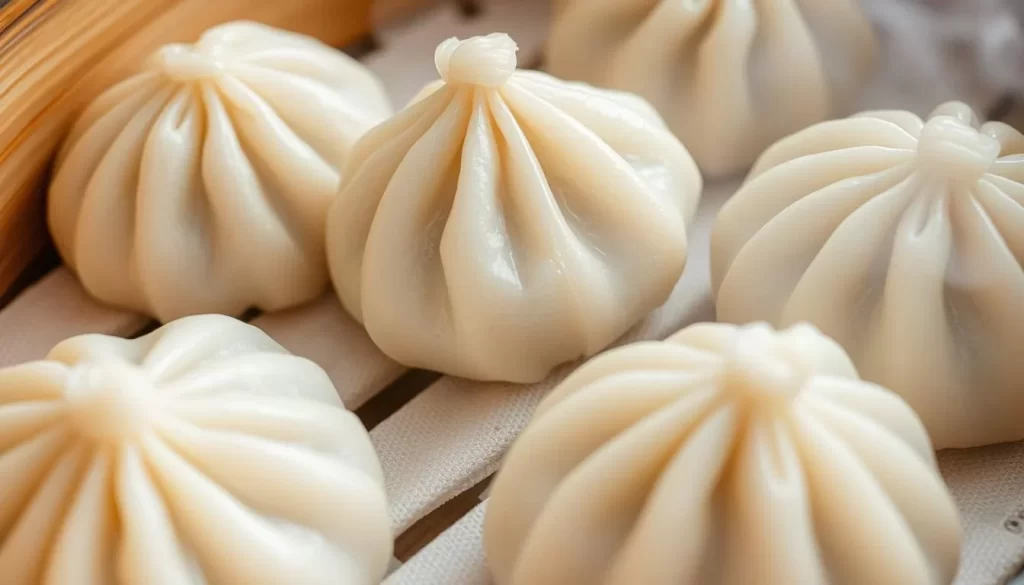
Soba Noodles and Local Specialties
Nagano’s soba noodles are another culinary highlight, made from locally-grown buckwheat that thrives in the cool mountain climate. Enjoy these noodles at a traditional restaurant where you can watch them being hand-made. Pair your soba with wild mountain vegetable tempura in the spring or mushroom tempura in the fall for a truly local experience.
Sake Breweries and Tastings
Nagano is one of Japan’s premier sake-producing regions, thanks to its pure mountain water and cold climate. On your day trip to the Suwa area, take advantage of the “Gokuraku Set,” which allows you to sample sake at five different breweries within walking distance. This is a unique opportunity to stop by multiple breweries and enjoy some of the best sake in Japan.
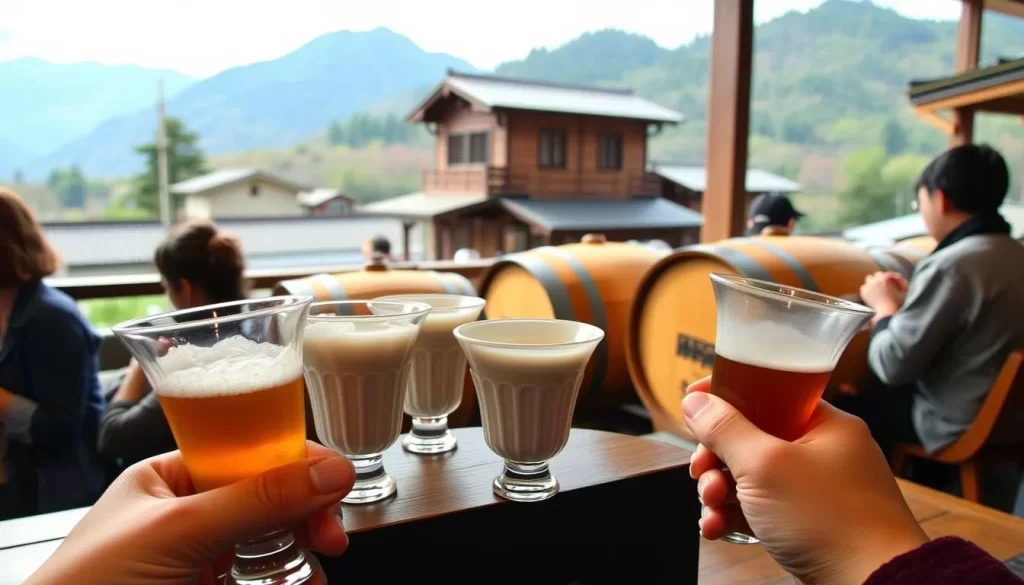
In conclusion, Nagano’s culinary scene is deeply rooted in its agricultural heritage and the changing seasons throughout the year. Whether you’re exploring the local markets, dining at a traditional ryokan, or visiting sake breweries, you’re sure to have a memorable culinary adventure in this beautiful area.
Day Trips from Nagano City
With its central location, Nagano City offers easy access to a range of exciting day trip options. You can explore historic towns, enjoy winter sports, or visit unique attractions, all within 30-90 minutes travel distance.
Obuse: Art and Chestnuts
Obuse is a charming small town just 30 minutes from Nagano, famous for its connection to the renowned artist Hokusai, who spent his final years here. Visitors can sample delicious chestnut-based confections at local shops and explore the town’s artistic heritage.
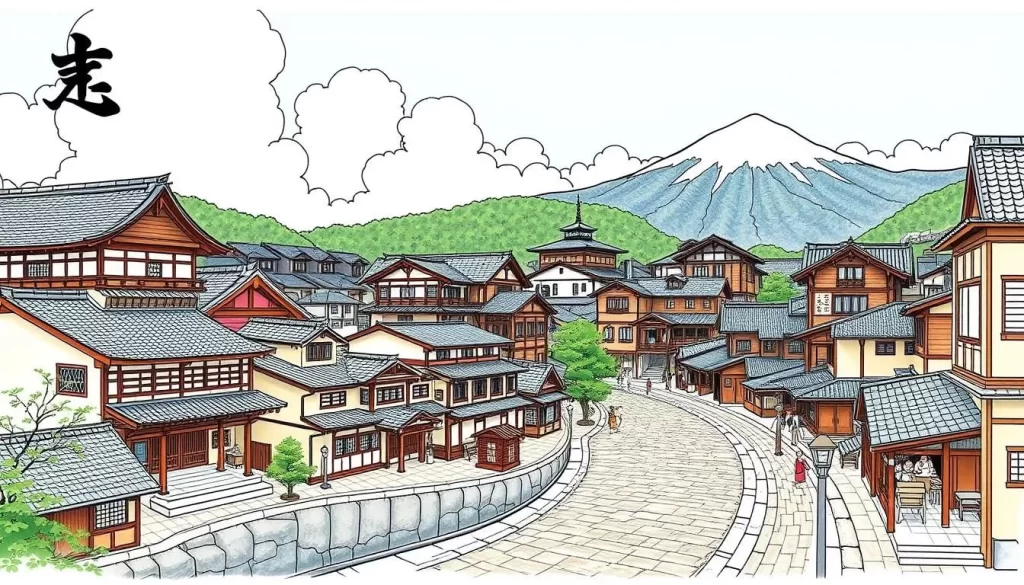
Hakuba Valley
Located between 60 to 90 minutes drive from Nagano Station, Hakuba Valley is a world-class skiing and snowboarding destination in winter, with ten interconnected resorts offering a vast amount of terrain and spectacular alpine views. In other seasons, it transforms into a hiking and mountain biking paradise.
Nozawa Onsen
Around 70 minutes drive from Nagano Station, Nozawa Onsen Snow Resort is one of Nagano’s most popular resorts, offering skiers and boarders around 300 hectares of terrain. It’s also known for its traditional hot spring town atmosphere, making it a great day trip destination for those who want to experience both Japanese culture and outdoor activities.
The Jigokudani Monkey Park is another perfect day trip destination, where you can walk through a scenic forest path to reach the area where wild Japanese macaques bathe in natural hot springs—a must-visit place in any season, especially magical in winter.
For those with limited time, guided day tour options are available that combine multiple attractions, such as visiting the monkey park in the morning followed by exploring a traditional town or enjoying a sake tasting in the afternoon.
Getting Around Nagano: Transportation Tips
To make the most of your trip to Nagano, understanding the transportation options is crucial. Nagano City serves as the main transportation hub for northern Nagano Prefecture, with various services connecting to popular destinations.
Public Transportation Options
Nagano Station is a major stop on the Hokuriku Shinkansen line, providing high-speed connections to Tokyo in about 80-110 minutes, depending on the service. The Nagano Dentetsu Line runs to Yamanouchi, home of the famous Jigokudani Monkey Park, where you can see the snow monkeys up close.
Bus services from Nagano Station connect to various regional destinations, including Togakushi, the monkey park, and ski resorts like those in the Hakuba Valley and Shiga Kogen. However, bus services may be less frequent in rural areas, so it’s essential to check timetables in advance to plan your day trips efficiently.
Renting a Car in Nagano
For those who prefer flexibility, renting a car is a viable option. It allows you to explore Nagano at your own pace, especially useful during winter when some areas may be less accessible by public transport. Be prepared for winter driving conditions if you plan to visit between December and March.
Guided Tours and Private Charters
If driving isn’t your preference, guided tours and private charters offer a hassle-free way to explore Nagano. These services provide valuable local insights and a pre-planned route, making your trip more enjoyable. You can visit popular spots like the Jigokudani Monkey Park and other attractions without worrying about transportation logistics.
When planning your trip to Nagano, consider that travel times can vary significantly due to weather conditions, especially in winter. Always allow extra time in your schedule to account for potential delays.
Best Time to Visit Nagano City
Whether you’re looking for winter sports, spring blossoms, summer hiking, or autumn foliage, Nagano City has something for everyone. The city’s varied climate and geography make it an exciting place to visit throughout the year, with distinct seasonal experiences.
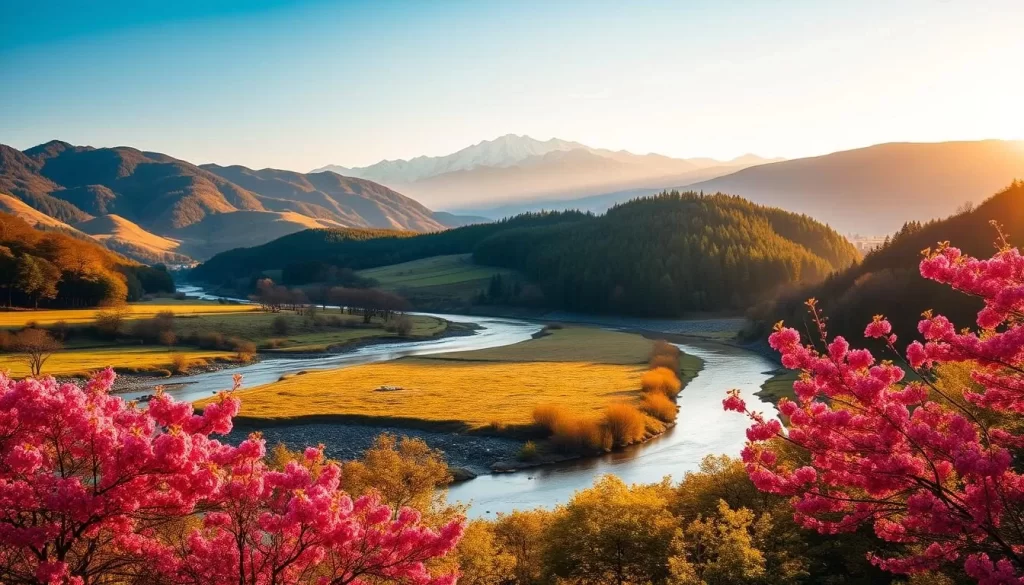
Seasonal Highlights
Nagano City can be visited year-round, with each season offering unique experiences. Winter (December to March) is peak season for many visitors, thanks to the legacy of the 1998 Winter Olympics, world-class ski resorts, and the iconic image of snow monkeys bathing in hot springs against a snowy backdrop.
In spring (April to June), cherry blossoms bloom at lower elevations, while higher mountains still offer snow activities, creating a unique time when you can potentially ski in the morning and view cherry blossoms in the afternoon.
Summer (July to August) provides relief from the heat and humidity that affects much of Japan, making it an ideal time to explore the mountains, hiking trails, and outdoor activities in comfortable temperatures.
Fall (September to November) showcases spectacular autumn colors across the mountains and is considered by many to be the most beautiful time to visit, with pleasant temperatures and fewer crowds than winter.
Planning Your Trip Duration
When planning your trip to Nagano City, consider that while a weekend visit from Tokyo is possible, most visitors find that 4-5 days is the ideal length to experience the highlights of Nagano City and the surrounding area without feeling rushed.
The sheer scale of Nagano Prefecture and array of stunning destinations means that you could easily while away two weeks exploring the area. For first-time visitors, however, four to five days will give you a good sense of the area’s natural beauty and rich culture, especially if you plan to spend a day or two walking or hiking.
Conclusion: Making the Most of Your Nagano Adventure
Whether you’re a nature lover, a foodie, or an adventure seeker, Nagano City is an ideal destination. As the proud host of the 1998 Winter Olympics, Nagano has a strong association with winter, attracting skiers and snowboarders from around the world with its numerous ski resorts and towering mountains.
Nagano City offers a perfect blend of cultural experiences, natural beauty, and outdoor activities, making it an ideal destination for people seeking an authentic Japanese experience. While many visitors come for the winter attractions like skiing and the Jigokudani Monkey Park with its hot spring-bathing monkeys, each season has its own way of showcasing Nagano’s unique charm.
To make the most of your visit, consider staying at different types of accommodations, such as a city hotel within walking distance of Zenko-ji Temple, followed by a traditional ryokan experience in one of the hot spring towns. This will allow you to experience the best of Nagano’s culture and natural beauty.
Culinary exploration should be a priority, as Nagano’s local specialties like oyaki dumplings, soba noodles, and regional sake offer a taste of local culture. For those with limited time, focus on a few key experiences, such as a visit to Zenko-ji Temple, a day trip to the Jigokudani Monkey Park, and exploring the local food scene.
In conclusion, Nagano City rewards visitors with authentic experiences and memories that will last for years to come. With its rich cultural heritage, breathtaking natural beauty, and exciting outdoor activities, Nagano City is a destination that has something for everyone, making it an ideal choice for your next trip to Japan.
The above is subject to change.
Check back often to TRAVEL.COM for the latest travel tips and deals.
